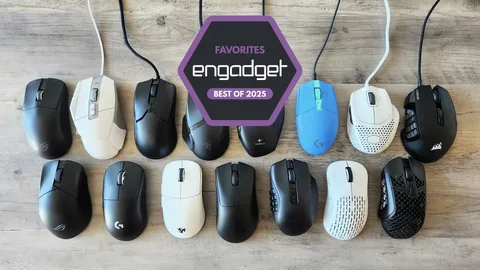In the world of PC gaming, precision and comfort are key. While off-the-shelf gaming mice can offer excellent performance, nothing quite matches a mouse tailored specifically to your needs. If you’re serious about gaming and love DIY tech projects, learning how to build your own custom gaming mouse from scratch could be the ultimate upgrade.
This guide will walk you through each step, from planning to assembly, giving you the tools and know-how to create a mouse that’s truly yours.
Why Build a Custom Gaming Mouse?
Before diving into the technical steps, it’s important to understand why someone might want to build a gaming mouse from scratch:
- Ergonomics: A custom build allows you to shape the mouse for your exact hand size and grip style.
- Performance: You can select high-end sensors, switches, and other components.
- Customization: LED lighting, extra buttons, unique textures, and personalized features can all be added.
- Learning: It’s a rewarding project that teaches electronics, programming, and design.
Tools and Materials Needed
To get started on how to build your own custom gaming mouse from scratch, you’ll need the following tools and parts:
Hardware Components
- Optical or laser sensor (e.g., PixArt PMW3360)
- Microcontroller (e.g., Arduino Pro Micro or STM32)
- Mouse switches (Omron switches are popular)
- PCB board (custom or pre-made)
- USB cable
- Scroll wheel mechanism
- Mouse shell (3D printed or modified from an existing mouse)
Tools
- Soldering iron and solder
- Wire cutters/strippers
- 3D printer (optional, for custom shell design)
- Screwdrivers
- Multimeter
Software
- Firmware (QMK or custom firmware)
- CAD software (Fusion 360, TinkerCAD, etc.)
- Arduino IDE or STM32CubeIDE
Step-by-Step Guide to Building Your Mouse
Step 1: Design the Shell
Use 3D modeling software to design your mouse shell based on your grip style. If you’re new to CAD, you can find existing STL files on platforms like Thingiverse and customize them.
Step 2: Choose and Wire Components
Select a high-performance sensor and compatible microcontroller. Connect the switches to the PCB and wire them to the controller. Precision here is crucial for optimal response times.
Step 3: Assemble the Hardware
Place the sensor at the base of the shell and align it properly for accurate tracking. Install the switches, scroll wheel, and any additional buttons you want.
Step 4: Flash the Firmware
Use the Arduino IDE or appropriate development environment to flash the firmware onto your microcontroller. If you’re using QMK or similar firmware, you can configure key mapping and DPI settings.
Step 5: Test Your Custom Mouse
Before sealing the shell, connect your mouse to a PC and test all functionalities: click response, sensor tracking, scroll wheel, and extra buttons. Make adjustments as needed.
Tips for a Better Build
- Use high-quality components to ensure durability.
- Make the shell modular for easier future upgrades.
- Add customizable DPI settings via software or hardware switches.
- Use a flexible, paracord-style cable or consider a wireless build.
Conclusion
Learning how to build your own custom gaming mouse from scratch is not only a fun project, but it also gives you a competitive edge in gaming. From ergonomics to aesthetics, every detail can be tailored to your preference. Whether you’re after better performance, comfort, or just want to flex your DIY skills, building your own gaming mouse is a challenge worth taking.


